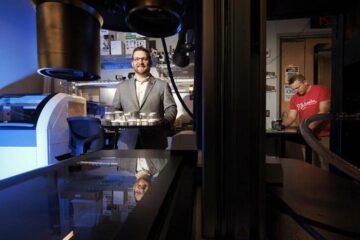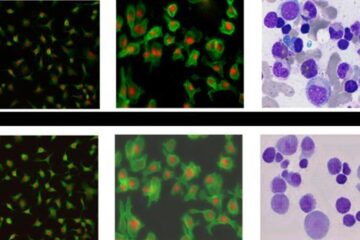Protein protects lung cancer cells from efforts to fix or kill them

High levels of the protein, known as Bc12, are found in the cells of lung cancer patients who smoke.
Previous UF research has shown that nicotine activates the protein, which helps tumor cells live long past their natural lifespan and resist chemotherapy. The new findings explain how the protein enables cancer cells to circumvent the body’s own efforts to change them back into healthy cells — or evade treatments designed to kill them.
Cancer is frequently associated with the accumulation of genetic aberrations in cells’ chromosomes. If these damaged cells can’t access their built-in repair system and subsequently survive long enough to divide and multiply, they pass along their mutations.
“If a cell experiences DNA damage, often that DNA can be repaired. But we found that Bc12 can block the DNA repair mechanism, which promotes tumor formation and genetic instability,” said Dr. Xingming Deng, an assistant professor in UF’s College of Medicine who is affiliated with the UF Shands Cancer Center. “This is a very important fundamental mechanism that explains why this protein has (a cancer-forming) function.”
Researchers say just one cell that develops a genetic mutation and is unable to repair itself could be enough for a full-blown tumor to develop.
“Lung cancer is the No. 1 killer of all cancer types; it is the most dangerous,” Deng said. “We wanted to find a way to treat lung cancer, how to prevent lung cancer, because lung cancer prognosis is very poor.”
Nearly 162,000 people will die from lung cancer in 2008, accounting for about 29 percent of all cancer deaths, according to the American Cancer Society. More people die of lung cancer than of colon, breast and prostate cancers combined.
In the study, UF scientists performed a series of laboratory experiments on lung cancer cells in culture that illuminated the molecular chain of events that allows Bc12 to disrupt DNA repair.
Deng also plans to explore the possibility that nicotine-induced activation of Bc12 can be blocked to increase chemotherapy’s effectiveness.
“This will probably help us in the future find ways to prevent tumors,” said Deng, adding that the protein could be a target for drug development. “We can target this mechanism and somehow find a way to prevent tumor formation.”
Media Contact
More Information:
http://www.ufl.eduAll latest news from the category: Life Sciences and Chemistry
Articles and reports from the Life Sciences and chemistry area deal with applied and basic research into modern biology, chemistry and human medicine.
Valuable information can be found on a range of life sciences fields including bacteriology, biochemistry, bionics, bioinformatics, biophysics, biotechnology, genetics, geobotany, human biology, marine biology, microbiology, molecular biology, cellular biology, zoology, bioinorganic chemistry, microchemistry and environmental chemistry.
Newest articles

Bringing bio-inspired robots to life
Nebraska researcher Eric Markvicka gets NSF CAREER Award to pursue manufacture of novel materials for soft robotics and stretchable electronics. Engineers are increasingly eager to develop robots that mimic the…

Bella moths use poison to attract mates
Scientists are closer to finding out how. Pyrrolizidine alkaloids are as bitter and toxic as they are hard to pronounce. They’re produced by several different types of plants and are…

AI tool creates ‘synthetic’ images of cells
…for enhanced microscopy analysis. Observing individual cells through microscopes can reveal a range of important cell biological phenomena that frequently play a role in human diseases, but the process of…





















